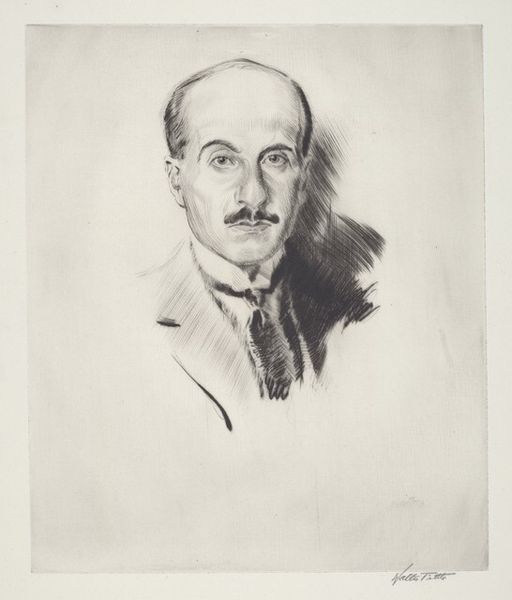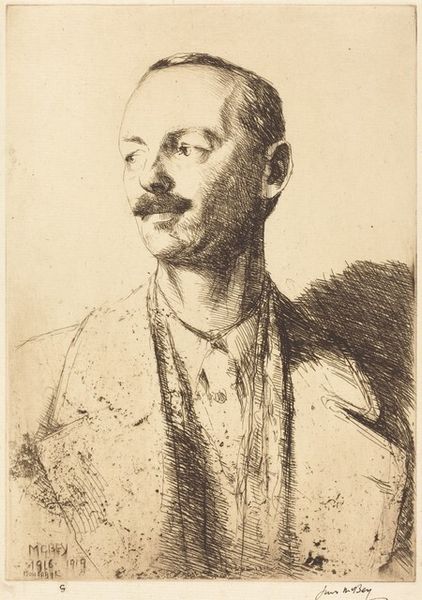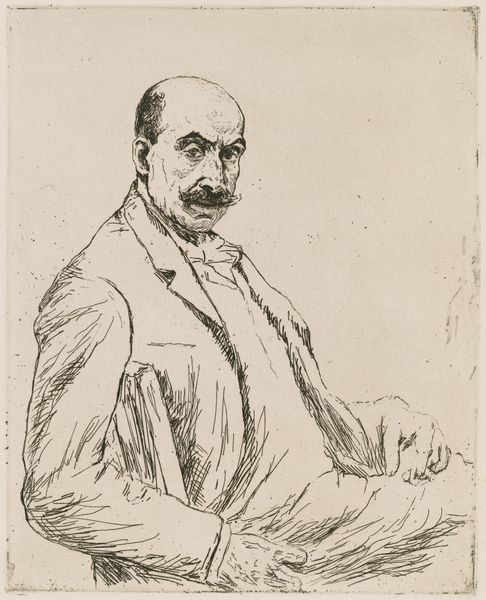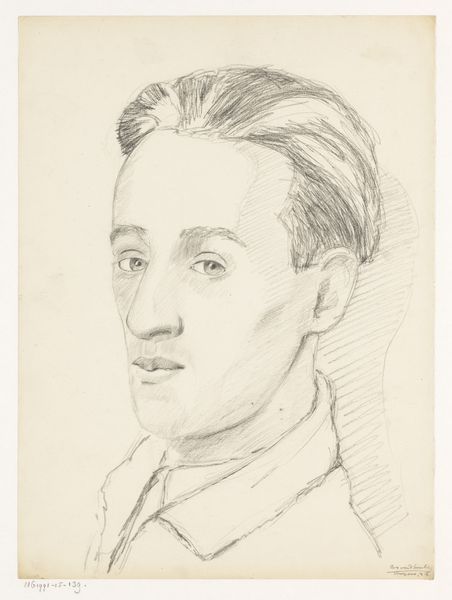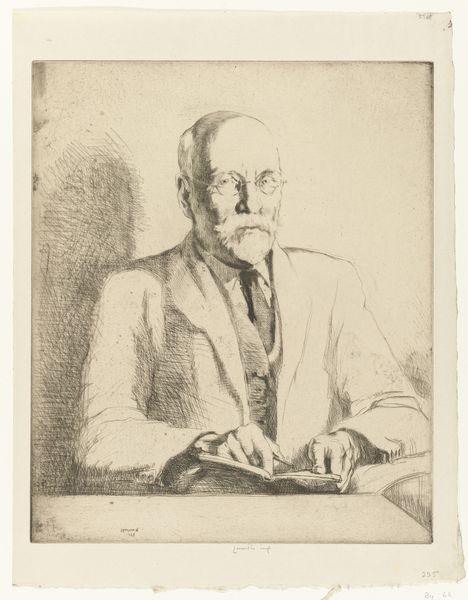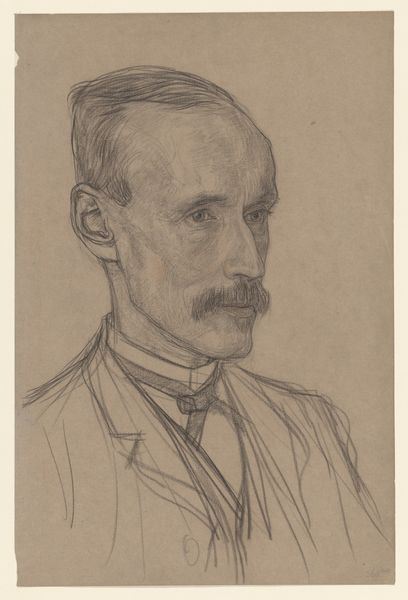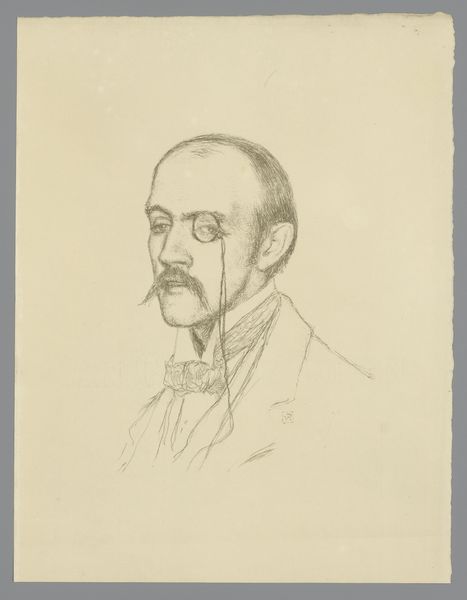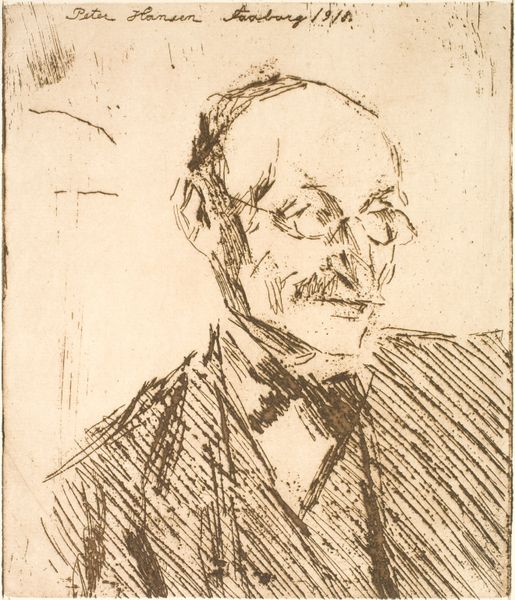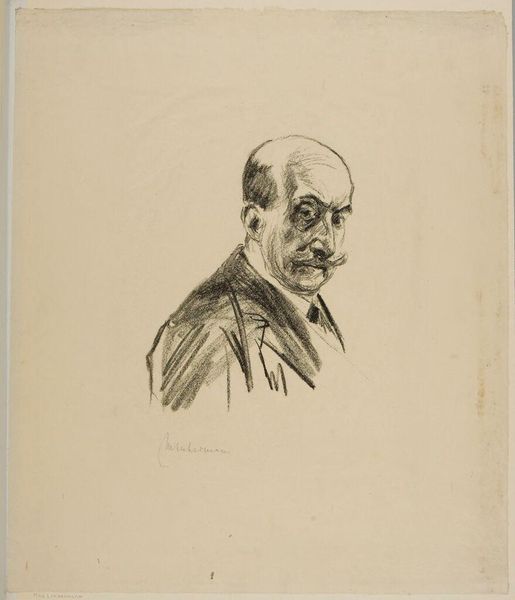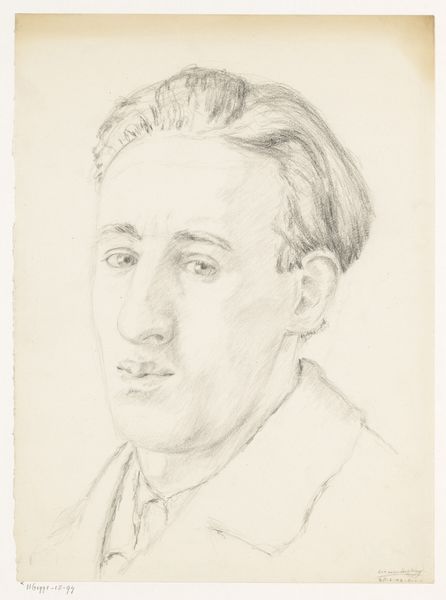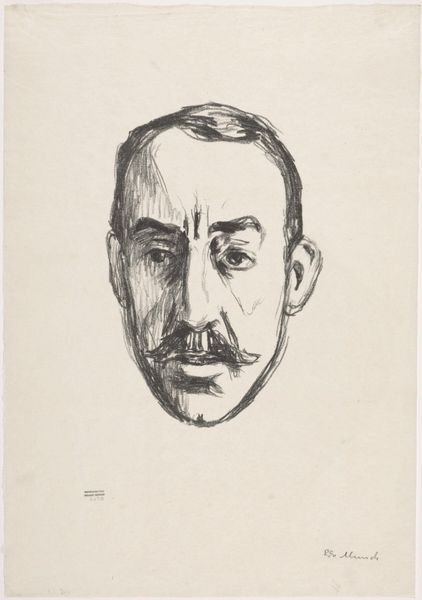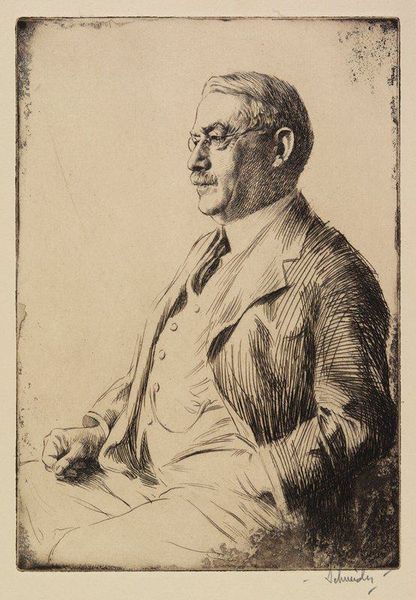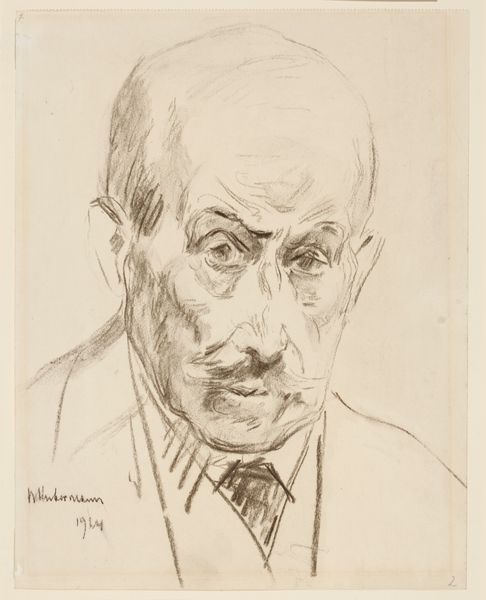
Karikatuurportret van Adriaan Johannes Petrus Boudewijnse 1880s - 1890s
0:00
0:00
elchanonverveer
Rijksmuseum
drawing, charcoal
#
portrait
#
pencil drawn
#
drawing
#
facial expression drawing
#
light pencil work
#
pencil sketch
#
charcoal drawing
#
charcoal art
#
portrait reference
#
pencil drawing
#
portrait drawing
#
charcoal
#
academic-art
#
portrait art
#
realism
Dimensions: height 713 mm, width 545 mm
Copyright: Rijks Museum: Open Domain
Curator: Standing here before this unassuming portrait, I can't help but feel a strange melancholy wash over me. It's a drawing, fairly simple, pencil and charcoal on paper, I believe. Editor: Indeed. This is a caricature portrait of Adriaan Johannes Petrus Boudewijnse, dating from the 1880s or 1890s, created by Elchanon Verveer. It's currently held in the Rijksmuseum collection. I wonder, does that feeling of melancholy relate at all to the context in which similar portraits were often produced and circulated? Curator: Possibly. I mean, it's definitely catching a particular essence of a human being, but exaggerating it slightly so there's this hint of tragedy behind the humour. It’s that pencil line, so fragile, so temporary-feeling. Almost like the sitter is about to fade away. Editor: The exaggerated features typical of caricature undoubtedly amplify his affect. The political use of caricatures during this period grew more sophisticated. What was once crude satire was slowly being used for targeted social critique, and often shaped or reinforced perceptions of individuals. Curator: Absolutely. Although without further knowledge of the subject, I can't say for sure what's being critiqued, here. All the same, the eyes are really alive. And the gentle shading around the coat contrasts well against some of the harder lines elsewhere. You get a sense of Verveer really relishing capturing a kind of inner spirit there. Editor: His handling of light certainly emphasizes particular characteristics. I wonder, when such drawings become part of a museum collection, do we lose or gain something in the translation? A work made originally for social critique is now an aesthetic object, distanced from its initial function. Curator: That's a really good question, and something artists probably consider when making work that has a clear message. It gains the immortality of a place in history, but loses its bite perhaps? Unless the gallery makes very sure that original social context remains alive. Editor: It’s a tension inherent in preserving the past. It requires a balance between display and critical examination. What remains with me, I suppose, is pondering the layers of historical reception as this object sits displayed here. Curator: Agreed. And me? I will carry away with me those softly, sadly human eyes. Always the eyes, aren't they?
Comments
No comments
Be the first to comment and join the conversation on the ultimate creative platform.
